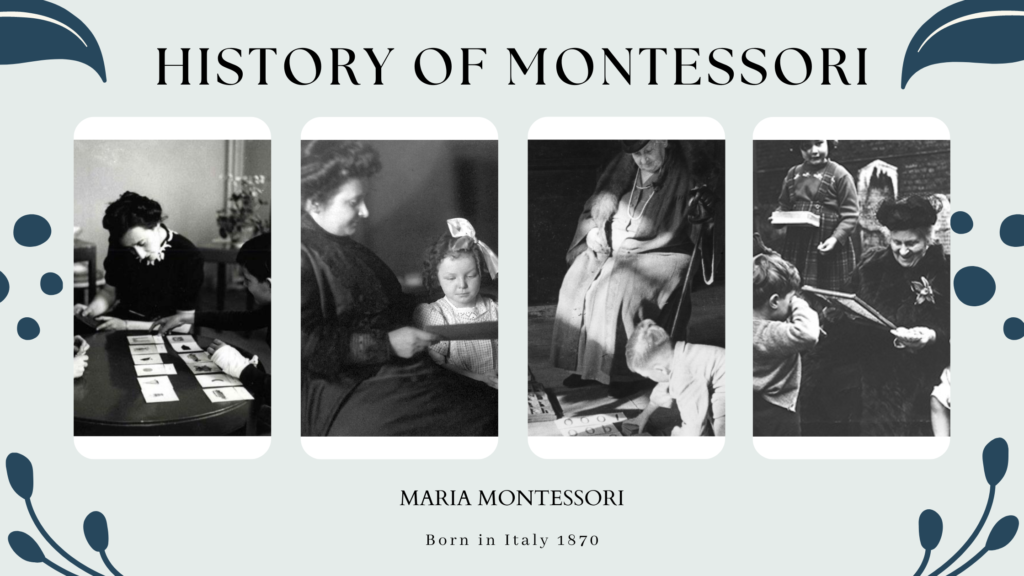Maria Montessori, born in Italy in 1870, was Italy’s first woman physician and one of the great educators of our time, pioneered the work with the children that we carry on today at Bambini Montessori School. Her first association with children began in 1898 at the University Psychiatric Clinic in Rome. Through intense study, observations and long days working with these children, she discovered that their problems were more emotional than medical, so designed special learning materials to meet their needs and trained teachers to present them in a special way. Montessori’s success with these children was proclaimed to be miraculous.
In 1904, she turned her attention to “normal” children. She opened her first school, Casa de Bambini (Children’s House) on January 6, 1907 in the San Lorenzo slums of Rome. Word of this “new education” began to spread and many more schools were opened in Italy and other countries. Our school is named in tribute to the original Montessori that Maria Montessori opened, Casa de Bambini.
This new vision of education for children is often thought of as the “education for life.” Her philosophy is based on the natural development of children and their intrinsic desire to explore, discover, and learn from the world around them. To enter a Montessori school is to enter a world specially prepared for the comfort and stimulation of the child. The classrooms are carefully designed environments where children of mixed ages work together or independently with multi-sensory materials that invite them to touch, to think, to experience. Children move freely about, choose an activity, work on it until a sense of accomplishment is achieved. Before the child chooses another activity, materials are put back in place. With the freedom to chose, children develop self-confidence, self-discipline, and self-mastery.
Because the Montessori classroom is child-centered, the Montessori teacher is more a facilitator than an instructor. The teacher serves as the link between the student and the learning environment, observing each child’s progress, introducing the next step to enable the child to master a skill.

